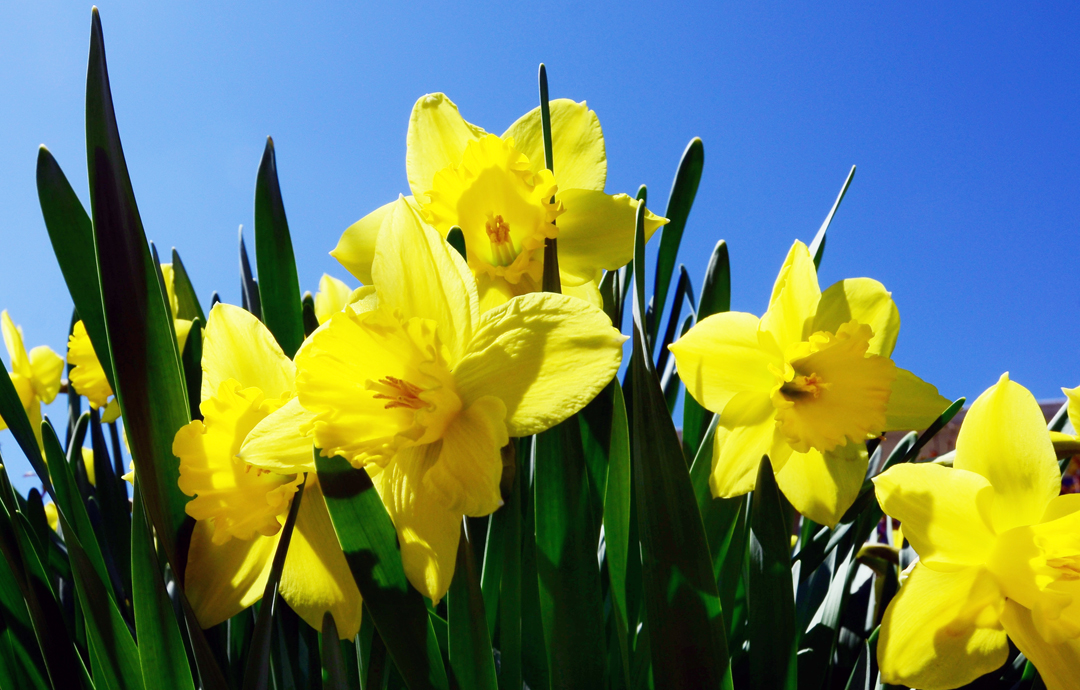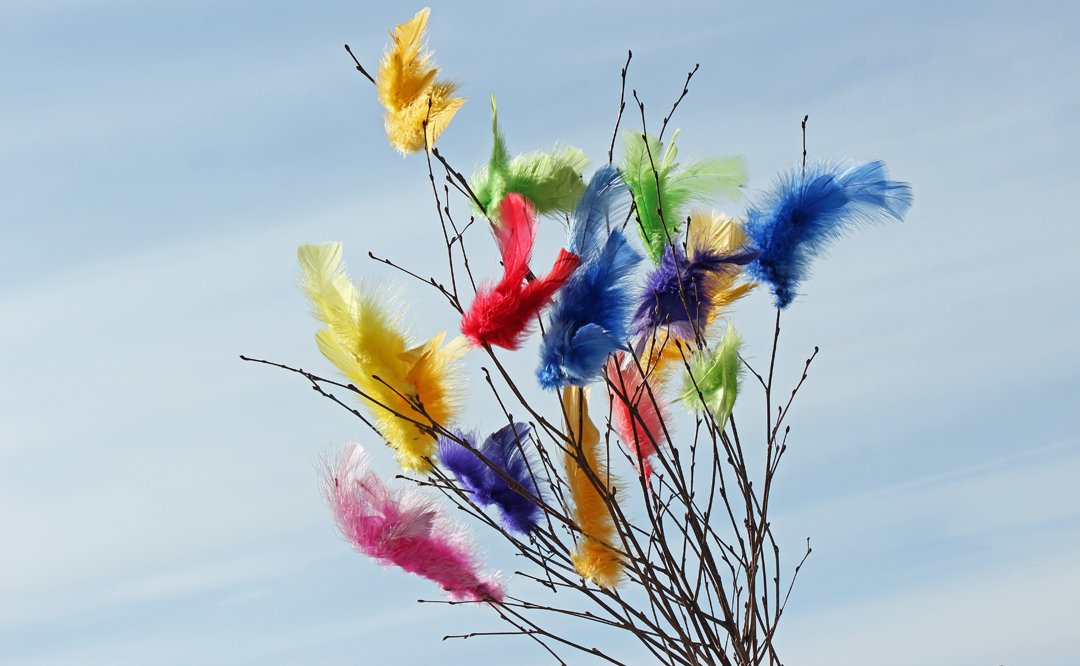The History and Customs of Sweden's Easter Traditions
Exploring how Swedish folklore and the Christian faith allowed particular items to combine and create Swedish Easter traditions celebrated today.
-
 Daffodils, "påskliljor" (Easter lillies) in Swedish. Photo: Michael Beresford
Daffodils, "påskliljor" (Easter lillies) in Swedish. Photo: Michael Beresford -
-
What do birch branches, bonfires, eggs, witches, feathers and copper coffee pots have in common? In Sweden, they all form cultural elements of traditional Easter customs.
The Vikings and Pagans of Scandinavia slowly accepted the ways of the Christian faith. By 1200 AD, the Norsemen were blending some ancient ceremonies and folklore with Christian practices, which evolved into the celebrations still enjoyed today. Swedish people tenaciously hold on to their festive traditions, some hundreds of years old. Family bonds are important, and young and old celebrate together. Rituals proclaim their long enjoyed heritage in a contemporary Sweden’s Easter.
Earth awakens each spring, refreshed and rejoicing. In the spring, Pagans were known to gather winter’s downed forest branches and pile them high into mounds. Igniting tar-mounded bonfires would cleanse all the woodland’s debris. Ancient mingling of pagan behaviors and Christian observances blended the Swedish folk custom of the stack’s burning. According to folklore, the large burning stack chased evil away from Easter. So, the burning of bonfires continues today although more often a bit later in the spring, on Walpurgis Night, Valborg, on April 30. -
 The word for Easter in Swedish, “Påsk”, comes from the Hebrew “Pesach” or Passover. And the colorful feathers seen here? Well, they didn’t become popular until the mid 19th century. Prior to that, the twigs were decorated with colorful ribbons and paper flowers. Photo by Daniel Ahlqvist.
The word for Easter in Swedish, “Påsk”, comes from the Hebrew “Pesach” or Passover. And the colorful feathers seen here? Well, they didn’t become popular until the mid 19th century. Prior to that, the twigs were decorated with colorful ribbons and paper flowers. Photo by Daniel Ahlqvist. -
-
Folklore inspires tradition
Folklore also had witches possessing evil powers. In a church in Uppland, Sweden, a painting from 1480 depicts three witches holding drinking horns, awaiting the devil who would fill them with a magic drink. During the 1600s through early 1700s, villagers identified many Swedish women to be witches (not unlike they did in America). And though America has witches at Halloween, Sweden has witches in Easter celebrations.
For the entire week before Easter, known as Holy Week, it was believed that witches’ evil came astir. Superstitious people guarded and hid their broomsticks after every use, preventing witches from stealing them. On Maundy Thursday, the night of Jesus’ Last Supper, witches were believed to fly out of chimneys on broomsticks with a black cat and copper coffee pot to Blåkulla, where they partied and danced with the devil for three days, led by cacophony, chatter and crackles of black magpies. Dancing faster made the witches dizzy, resulting in them doing or saying things backward — a “skill” which could prove someone to be a real witch. Folklore also claimed real witches could appear as if they were in their homes, when they actually flew off to Blåkulla for the three days before Easter. If a woman recited a hymn backward on Easter morning, it revealed her as a real witch.
Since the early 1800s, children have made “Glad Påsk” (Happy Easter) cards for their neighbors. Girls have dressed up as “Påskkärringar” (Easter witches) in long colorful skirts and cheeks colored with red circles, noses dotted with freckles and scarves covering their heads. Then, with shawls on their shoulders, children ride on their mother’s brooms, carrying the cards and copper coffee pots to greet their neighbors. The neighbors give them a coin, candy or small cookies, placing them in the coffee pot. The boys follow along dressed as tramps with hopes of sharing the goodies. -
Religious influences
On Good Friday, which marks the day Jesus died on the cross, people in the 1600s used birch branches to lightly whip one another as a reminder of Christ’s sacrificial sufferings. The use of birch branches evolved into a symbol of spiritual renewal. Known now as Easter twigs (Påskris), people gathered birch branches and placed them in vessels of water, decorated with feathers — with hope and time burst little leaf shoots from the branches, signifying renewal and rebirth. People today may buy branches decorated with colorful feathers at the markets, or cut and decorate their own birch or forsythia branches with feathers, colored eggs and small "påskkärring" ornaments.
While the last day before Lent — known as Shrove Tuesday (also Fat Tuesday or “Fettisdagen”), a day to use up all the fat in the house before fasting during the 40 days of Lent (when diets consisted only of hard thin bread, dried fish and potatoes) — was historically the day Swedes enjoyed “semla,” a cardamom bun sweetened with marzipan and whipped cream, the buns are now enjoyed for weeks. When I attended school in Sweden, students were served the adored bun every Tuesday of Lent. Today Swedes eat scrumptious semla buns from January through Easter.
In the spring, eggs give abundant joy at Easter. Hard boiled in water with onion slices turns the eggs a golden yellow, a color which is uplifting after a long, dark, cold winter; it’s the color of the sun’s warm rays, and baby chicks filling springtime with new life. Today eggs are eaten and relished in various forms, shared on all Easter tables. They get decorated in a variety of colors, and families play the game “ägg pickning,” in which two players face each other holding their hard-boiled eggs end-against-end. Everyone takes a turn banging their opponent’s egg until someone’s egg cracks. Winners with un-cracked eggs then play against each other until one winner with an un-cracked egg remains.
Today, Easter dinners include varieties of herring, eggs and dilled potatoes. Marinated salmon or lox, Jansson’s temptation (sliced potatoes baked with onion and Swedish style anchovies) combined with with hard bread and cheeses. Either dilled salmon or dilled lamb may follow, served with spring vegetables. Yellow flowers known by Swedes as Easter lily (Påsklilja - daffodils) decorate the table.
You, too, can decorate your own Swedish Påskris, play “ägg pickning” or make a reservation at a local IKEA to taste test a typical Swedish Easter meal. -
I wish you a customary “Glad Påsk” (Happy Easter)!
-
Carol Elizabeth Skog
Carol Elizabeth Skog is of Swedish descent, studied at Västkustens Ungdomsskola in Ljungskile, Sweden through the Scandinavian Seminar program, and immersed herself into the language, customs, traditions and foods of her family’s heritage. She has a B.A. from Pacific Lutheran University, Tacoma, WA in Scandinavian Studies with a minor in English/Creative Writing. Author of “Enchantment Ädventyr,” she is currently penning a Victorian novel, opening scene NYC, 1900. www.carolelizabethskog.com -
-
